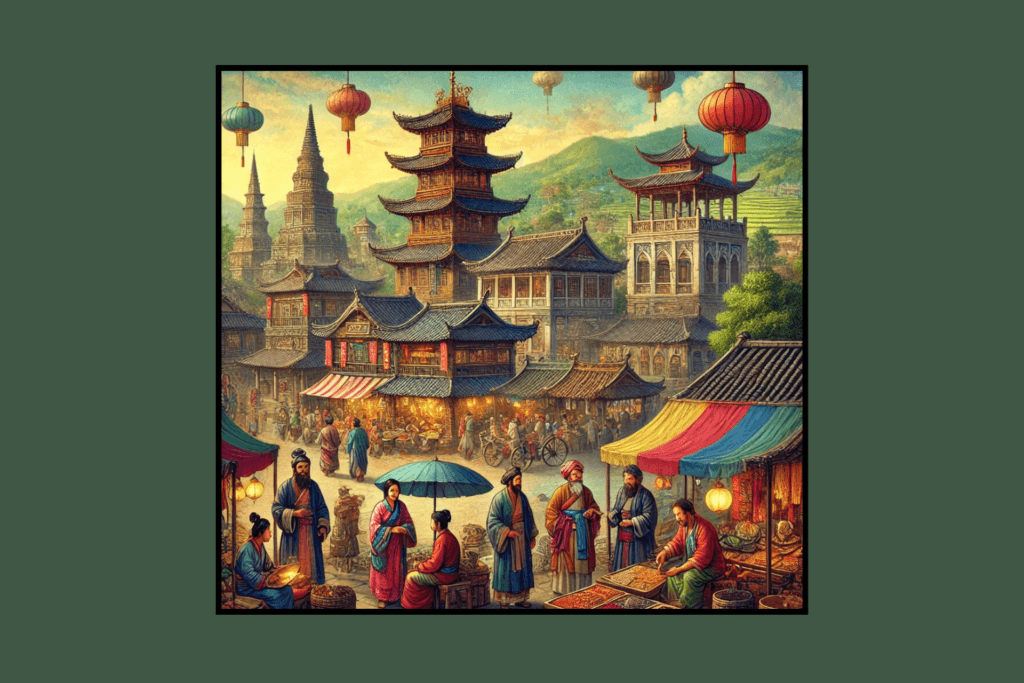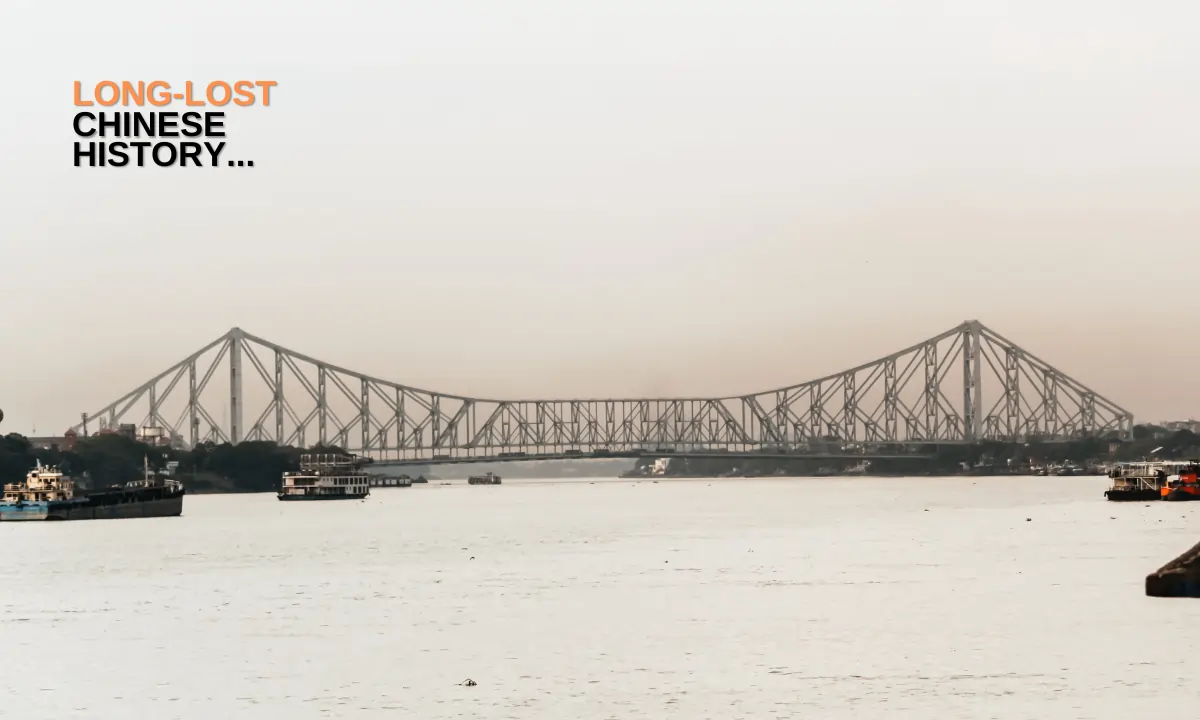West Bengal is celebrated for its rich cultural heritage, vibrant festivals, along with culinary diversity. Yet, hidden in the folds of its history lies an intriguing narrative is the long-lost connection with the culture of the Chinese that dates back centuries. The bustling streets of Kolkata are filled with the aroma of street food, and the chatter of the diverse communities whisper the tales of the significant Chinese presence that once thrived in the region. From the routes of the trade that crisscrossed the Indian Ocean to the establishment of vibrant Chinese communities, the relationship of West Bengal with China has shaped its identity in ways that are only now starting to be rediscovered.

On this point, in this exploration of West Bengal’s Chinese history, we will journey through time to unveil the layers of this unique exchange of the culture, and we also underline the settlements of the history, culinary contributions, economic ties as well as the ongoing efforts to reclaim this important aspect of the heritage of the West Bengal’s.
Historical context of the Chinese settlement in West Bengal
The historical connection between China as well as West Bengal is deeply rooted in the practices of the ancient trade. During the 1st millennium CE, the traders from China started to traverse the maritime Silk Road linking the East to the West, and the bustling ports of Bengal, particularly the port city of Kolkata (formerly Calcutta), became important stops for the traders of the Chinese seeking to exchange the silk, tea and the ceramics for spices, textiles along with the precious metals.
Nevertheless, the significant migration of the communities of Chinese to West Bengal began in the 18th and 19th centuries and is largely driven by socio-political factors along with economic opportunities. The Qing Dynasty confronted the issues that pushed many Chinese to seek better prospects abroad. In Kolkata, a notable settlement arose in the area known as Tangra is recognized today as the hub of Chinese culture in the city as well. By the early 20th century, the community of the Chinese in Kolkata had flourished, establishing businesses and forging deep ties with the local population.
Key Events in the Chinese migration to West Bengal
| Year | Event | Description |
| 1770s | Early Trade Contacts | Initial maritime connections were established. |
| 1820s | Establishment of the Chinese settlements. | Significant migration following the economic opportunities |
| 1900s | Flourishing the community in Kolkata | Tangra becomes the cultural hub for the settlers of the Chinese. |
Cultural influences, along with the contributions
Perhaps the most visible legacy of the Chinese in West Bengal is the cooking fusion that has occurred over the years, and the arrival of Chinese immigrants brought with it a wealth of culinary traditions, which intertwined beautifully with the local flavours of Bengali. TheChinese cuisine in West Bengal is characterized by its unique blend of spices, incorporating the region’s love for mustard oil, green chillies, along fresh vegetables. Nonetheless, dishes like chow mein, momos and spring rolls have become staples in West Bengal, and it was celebrated for their delightful flavours.
On top of that, the Chinese community has also left an indelible mark on the art along with the architecture of West Bengal. In Kolkata, one can find the beautiful Chinese temples that stand as the testaments to the cultural intertwining of these two great civilizations. and the Kuan Kung Temple was dedicated to the god of war and literature, is the focal point for the Chinese community is showcasing the intricate designs as well as the traditional decorations. Nevertheless, festivals like the Chinese New Year are celebrated with great enthusiasm and feature vibrant lion dances and parades along with community feasts, reflecting the deep-rooted cultural importance of these events in West Bengal.
Popular Chinese dishes in the West Bengal
| Dish | Description |
| Chow Mein | Stir-fried noodles with the vegetables along with the sauces. |
| Momo | Steamed dumplings filled with meat or vegetables. |
| Spring Rolls | Crispy rolls filled with assorted vegetables. |
Economic contributions and the relations of trade
Historically, the traders from China in West Bengal played a critical role in the local economy, and they brought with them several goods and established a vibrant trading ecosystem that benefited both communities. Products such as silk, tea as well and porcelain from China were exchanged for Bengal’s rich textiles and spices along with the raw materials.
In recent years, the economic relationship between China and West Bengal has seen a resurgence, and the modern trade agreements and partnerships have facilitated new opportunities, from technology to tourism. Additionally, the strategic location of West Bengal makes it an important point for business ventures and the cultural exchanges between India and China.
Challenges and renaissance
The Chinese community in West Bengal also confronted challenges and political upheavals, particularly during the Sino-Indian War of the year 1962, which led to a decline in the population of the Chinese as many faced discrimination along were forced to leave or assimilate. On this point, this resulted in the loss of the cultural identity along with the language among the descendants of the Chinese immigrants with the many younger generations unaware of their heritage.
Furthermore, in recent years, there has been renewed interest in rediscovering as well as celebrating the Chinese heritage of West Bengal, and community organizations and cultural festivals have arisen and are determined to reconnect the younger generations with their roots. On top of that, events like the Parade of the Chinese New Year in the Tangra bring together the local community and attract visitors eager to learn about this vibrant history.
Conclusion
In summary, by the difficult tapestry of the history of West Bengal, it becomes evident that the inheritance of the Chinese is a vital thread that was laced into its fabric, and from the the culinary delights to the vibrant cultural practices, the influence of the Chinese community has augmented the West Bengal in profound ways.
FAQ
What is the historical connection between West Bengal and China?
The historical connection involves trade routes and significant Chinese migration during the 18th and 19th centuries.
Where did the Chinese community settle in West Bengal?
The Chinese community primarily settled in Kolkata, particularly in the Tangra area.
What are some popular Chinese dishes in West Bengal?
Chow mein, momos, and spring rolls are popular Chinese dishes enjoyed in West Bengal.
How did Chinese cuisine influence Bengali food culture?
Chinese immigrants infused local flavors, creating a unique culinary blend with Bengali cuisine.
What role did Chinese traders play in West Bengal’s economy?
Chinese traders established vibrant trading ecosystems, exchanging silk, tea, and porcelain for local products.
What challenges did the Chinese community face in West Bengal?
The community faced political upheavals and discrimination, particularly during the Sino-Indian War in 1962.


